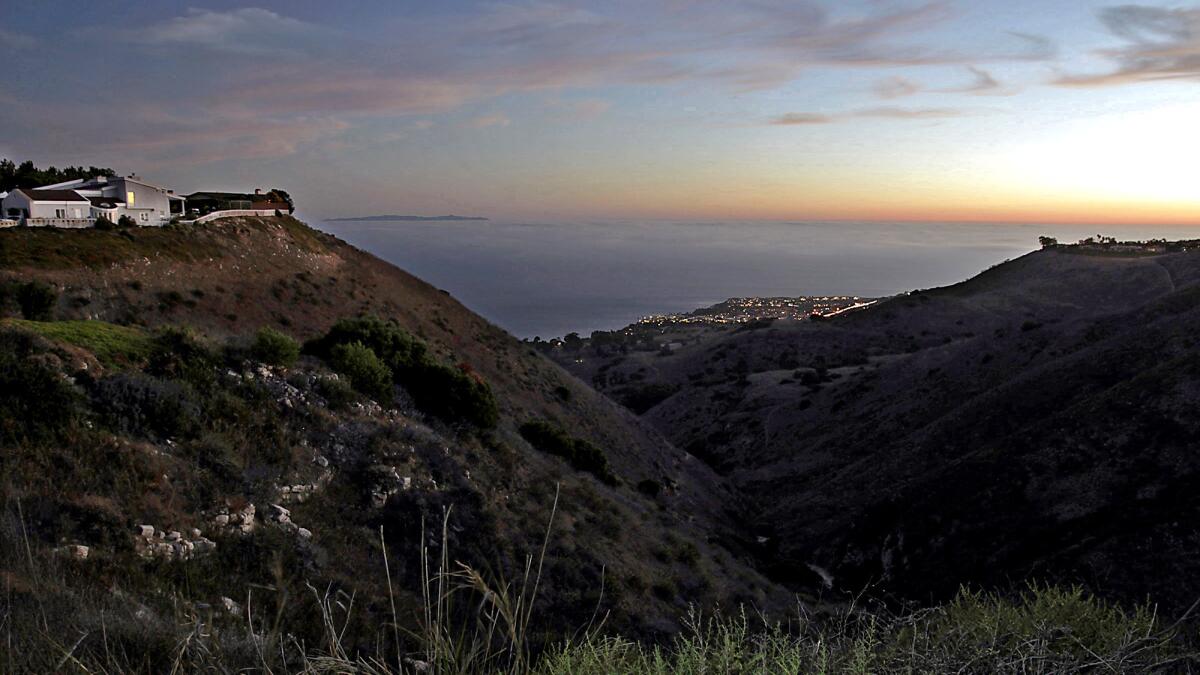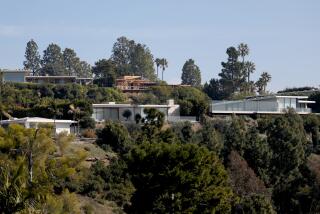Neighborhood Spotlight: Rolling Hills’ luxury overflows onto the outdoors

In status-conscious L.A., there are many ways to signal that you are among the region’s elite, and none more so than the place where you make your home.
The location of that home is key. Somewhere in the heights, where you can look down on the crowded flats of the basin. Someplace isolated, either geographically or via imposing security features such as gated private entrances and armed private police. And last but never least, a neighborhood that is outside of the city limits.
Rolling Hills ticks all of those boxes, and then some, by setting aside acres of land — in a region facing a critical shortage of new housing — to provide pastures and riding trails for horses.
To be sure, there is no way that A.E. Hanson, who was also the developer of Hidden Hills and one of the landscape architects of the grounds of USC, could have foreseen today’s housing crunch. In 1935, the supply of land in Southern California seemed as inexhaustible as the oil that geysered from wells across the region, and few gave a thought to the possibility that one day both would largely dry up.
So Hanson set out to create a sprawling neighborhood of luxury dude ranches, with minimum lots of one acre. As he put it in his history of Rolling Hills, “Mankind is motivated by wanting something, or needing something. And when you have a piece of land that families both want and need, the world is your oyster.”
To ensure that buyers would want and need his land, he created design guidelines to engender a sense of place and implemented deed restrictions to ensure that they remained.
The homes were to be all one-story and painted white. There would be a guarded gatehouse, the only break in the white rail fence that enclosed the neighborhood’s 2,000 acres. There would be no sewers or any public infrastructure, and all was zoned residential.
Hanson had struck on a recipe for success, and today Rolling Hills is a place where, in his words, wealthy buyers can have “a piece of land large enough that they wouldn’t hear their neighbor’s radio; a place where they could have a garden or keep a horse,” and, most all, “privacy, privacy, privacy.”
Neighborhood highlights
White-glove dude ranches: Rolling Hills has 30 miles of riding trails, and with lots starting at 1 acre and ranging up to 5, there’s plenty of room for equine activities.
On top of the world: With ocean, city and mountain views, Rolling Hills offers some of the most commanding vistas in all of Southern California.
Live and let live: With little local government to speak of, and no public infrastructure, the city of Rolling Hills embraces a particular kind of California-bred libertarianism.
Neighborhood challenges
Inventory control: There are only 15 developable lots left in the city and fewer than 700 existing homes, making Rolling Hills a tough market to crack.
Sticker shock: For those buyers who are dedicated to making Rolling Hills their home, life inside the white fence starts at well over a million dollars.
Expert insight
“Rolling Hills feel like an entirely different world from Los Angeles,” said Michelle Miller, an agent who’s been active in the area for nearly a decade.
She said that the neighborhood’s batch of single-story builds have grown more luxurious with each new development but that the community is still united in its love for outdoor lifestyles.
“It’s consistently been rated one of the safest suburbs in California, which has drawn lots of families over the years,” Miller said, adding that Rolling Hills’ spacious lots often sell for at or above asking price.
Market snapshot
In the 90274 ZIP Code, based on 19 sales, the median sales price for single-family homes in January was $1.675 million, down 15.4% year over year, according to CoreLogic.
Report card
Public schools in the Rolling Hills area include Soleado Elementary, which scored 965 on the 2013 Academic Performance Index, and Ridgecrest Intermediate, which scored 954.
Other highlights are Rancho Vista Elementary and Miraleste Intermediate, which scored 941 and 931, respectively. The area’s high school, Palos Verdes Peninsula High, scored 908.
Times staff writer Jack Flemming contributed to this report.
MORE FROM HOT PROPERTY
Tracey Edmonds cuts loose from her spot in Century City
Onetime Robert Blake home is ready to cast a new owner in Studio City
Retired baseball slugger Jermaine Dye looks to crush a home sale in San Diego






